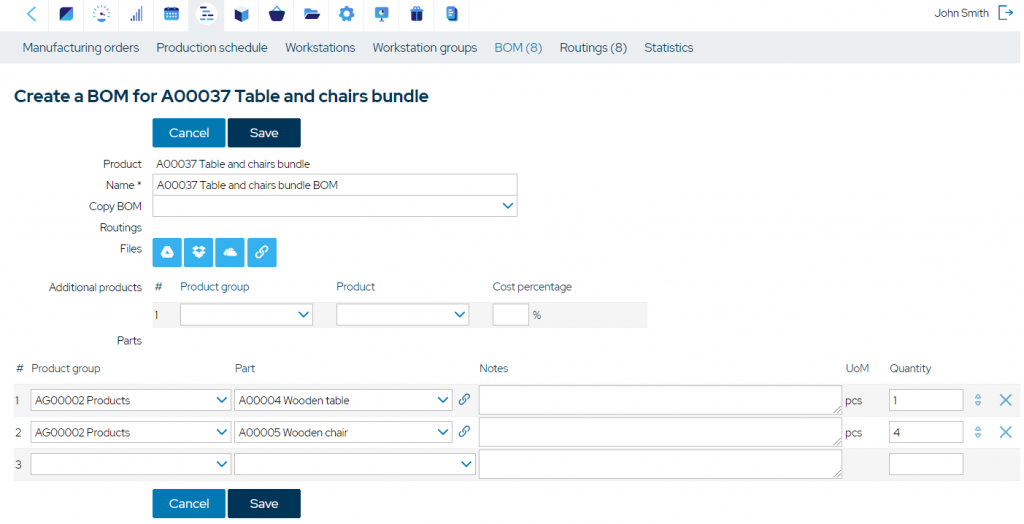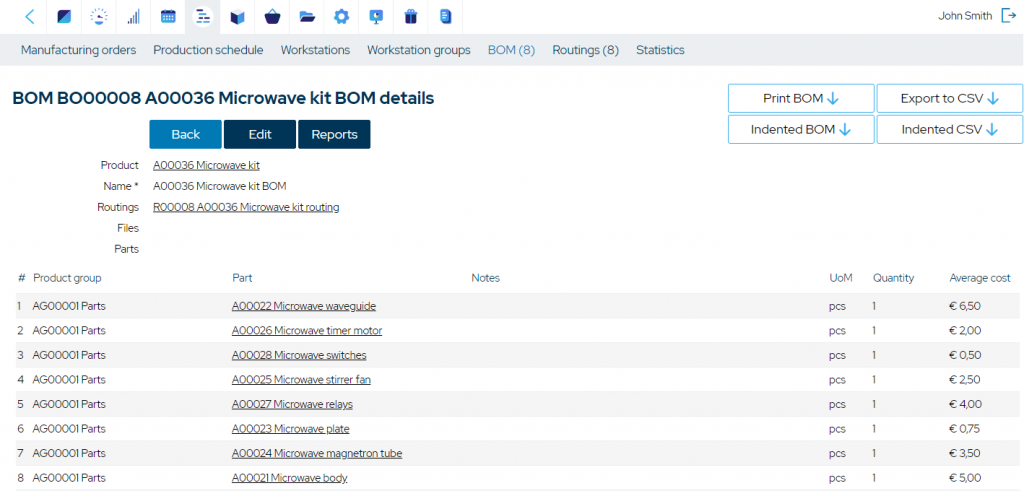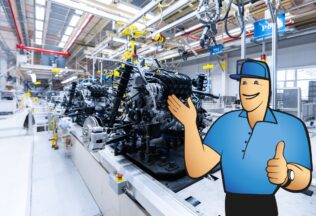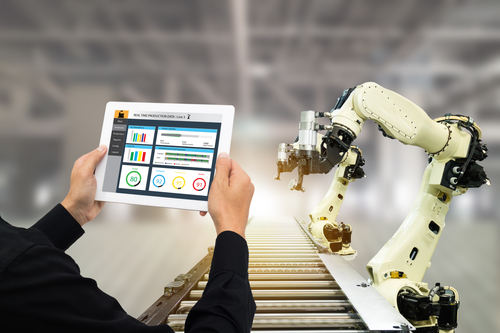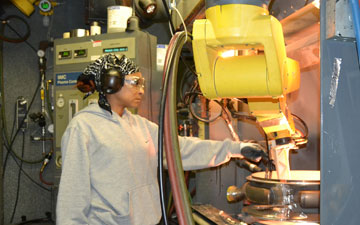Kitting – Benefits, Examples, and Best Practices
Kitting is a valuable method to help manage raw material and finished goods inventories and optimize the manufacturing process. There are two main types of kitting and numerous instances in which either of them can prove useful.
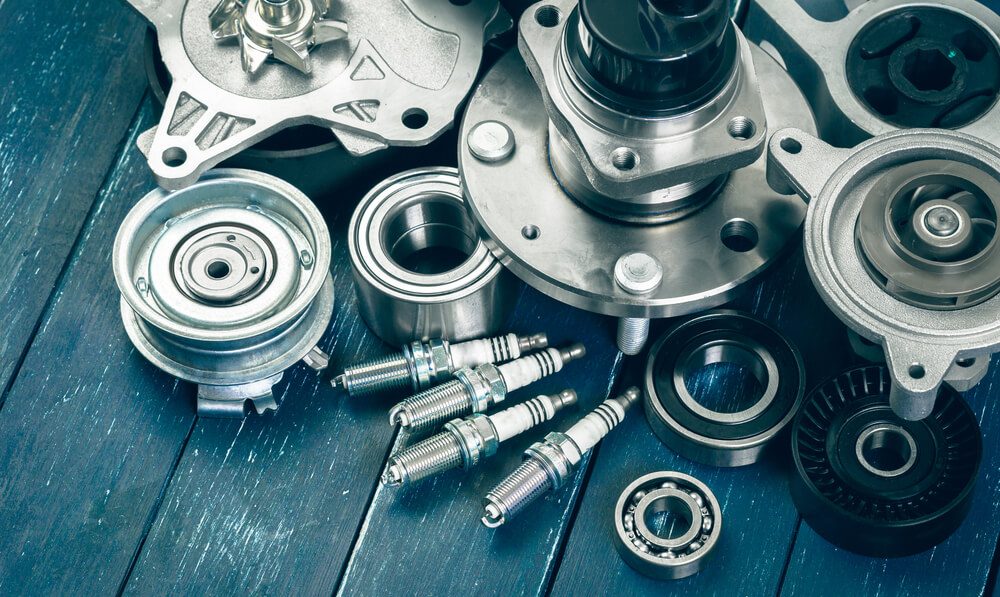
You can also listen to this article:
What is kitting?
Kitting or bundling is a method of combining production components or finished goods into a new unique SKU (stock keeping unit). These could be items that are often used together in a manufacturing process (material kitting or parts kitting) or finished goods that together make up a new product (product kitting).
Kitting is used in both manufacturing as well as distribution but often in different ways and for different purposes. Using this method can help streamline the production process, optimize production floor logistics and inventory management, and much more.
Product kitting
In product kitting, finished goods are grouped together into product bundles, which are then offered to customers as a single purchasable item. These bundles can include multiple identical items, complementary items, accessories, or variations of a core product, usually offered at a lower price than what they would cost when bought as single items.
Creating these product bundles enables companies to improve their customers’ shopping experience while stimulating sales and inventory turnover. In addition, it can streamline fulfillment operations, making it easier for businesses to pick, pack, and ship orders efficiently.
Product kitting is typically used in retail, e-commerce, and distributing environments, but manufacturers can also benefit from it.
Material kitting
In material kitting (also known as parts kitting), individual components, materials, or parts required for specific manufacturing tasks are grouped together into pre-packaged kits or bundles that are then managed as a new SKU.
The core purpose of material kitting is to reduce order picking time, improve inventory organization, and increase the efficiency of the assembly process.
Workers benefit from material kitting as it eliminates the need to search for individual components, saving time and reducing errors in picking and assembly. The components of a bill of material (BOM), or parts of it, would arrive on the shop floor in a ready-to-assemble set, leaving the workers to only deal with the task of processing or assembling them. Warehouses also benefit from optimized space usage, and companies experience cost savings as production becomes more efficient.
Apart from reducing material handling time by simplifying line-side inventory and improving picking and reporting speed, kitting can also aid in quality control as each item could be inspected before going into the bundle.
Material kitting is exclusively used in manufacturing environments, but component kits can be assembled either in-house, using kitting services, or by asking suppliers to kit together the necessary items.
Benefits of kitting
Using kitted items has many benefits compared to just handling single units. Here are some of the advantages of both parts and product kitting.
Product kitting benefits
- Increased order value. Product bundling is a powerful strategy for boosting the average customer order value in e-commerce and retail. By bundling related products into pre-assembled kits, customers are more inclined to purchase more items in one go. This increased order value directly impacts the bottom line and helps businesses grow their revenue.
- Simplified purchasing process. Product kitting simplifies the purchasing process for customers. Instead of browsing through numerous individual products, they can quickly select a pre-assembled kit that meets their needs. This convenience not only saves customers time but also enhances their overall shopping experience, contributing to higher customer satisfaction.
- Faster order fulfillment. The streamlined nature of product bundling leads to a more efficient order fulfillment process. Warehouse staff can pick and pack pre-assembled kits efficiently, reducing the time it takes to process orders. This speediness is particularly vital for e-commerce companies striving to provide faster shipping options to their customers.
- Elimination of dead stock. By offering pre-assembled kits, businesses can reduce the likelihood of dead stock. Individual items that might not sell well on their own can be included in bundles, ensuring they are sold and preventing inventory from becoming stagnant. This leads to more efficient inventory management and cost savings.
- Higher customer satisfaction. Ultimately, product kitting enhances customer satisfaction. Customers receive their orders quickly, in a simplified manner, and often with added value from bundled items. This positive shopping experience not only encourages repeat business but also promotes positive word-of-mouth, further growing the business.
Material kitting benefits
- More efficient assembly process. Material/parts kitting significantly streamlines the assembly process in manufacturing. By grouping essential components together, it eliminates the need for workers to hunt for individual parts, saving precious time. This efficiency ensures that production lines run smoothly, contributing to faster order fulfillment.
- Faster picking. When materials and parts are pre-grouped into kits, the picking process becomes much faster and more straightforward. Pickers can locate and retrieve kits with ease, which saves time when preparing orders for shipping. This efficiency has a direct impact on reducing labor costs and accelerating the shipping process, leading to higher customer satisfaction.
- Labor cost savings. Material/parts kitting can result in substantially lower labor costs. Workers can focus on value-added tasks such as assembly and quality control, rather than spending time searching for individual components. This reduction in labor costs positively affects the bottom line, contributing to cost savings in fulfillment operations.
- Warehouse space optimization. Kitting also plays a pivotal role in optimizing warehouse space. Instead of stocking a myriad of individual parts, warehouses can consolidate kits, reducing the required storage area. This optimization not only minimizes warehousing costs but also lowers the risk of holding dead stock, which is inventory that doesn’t move and ties up valuable space and capital.
Examples of kitting
Once you realize what a kit constitutes—a single package containing many separate items—, you can see them everywhere.
Product kitting examples
Product kitting can take various forms across different industries. Here are some bundles we commonly see in shopping centers, online stores, and even restaurants:
- Electronic gadgets bundles. In the electronics industry, manufacturers often bundle devices like smartphones or tablets with accessories like cases, screen protectors, and headphones to create comprehensive kits for consumers.
- Makeup and beauty sets. Cosmetics companies create makeup sets that include a variety of products like lipstick, mascara, and eyeshadow, providing customers with a complete makeup look.
- Subscription boxes. E-commerce businesses in the subscription box industry curate and deliver themed kits to subscribers regularly. These can include beauty products, snacks, books, or other items based on the subscriber’s preferences.
- Food and beverage pairings. Restaurants or specialty food stores can offer meal kits that include all the ingredients needed for a specific dish, along with a recipe. Wine and cheese pairings are another example of product kitting in the food and beverage industry.
- Art and craft kits. Suppliers of art and craft materials can package kits that include various art supplies, instructions, and templates for specific projects, such as painting, knitting, or model building.
- Computer build kits. In the tech industry, companies offer kits that include all the components necessary to build a custom computer, catering to tech-savvy consumers who want to assemble their PCs.
- Fast food meals. A burger, fries, and a drink are combined into meal packages in many fast food restaurants. Even if a customer does not really want the fries, they will often still get the meal because of perceived cost-savings.
Material kitting examples
Material kits or part kits are bundles of raw materials or components used in a production process, e.g. components that make up a subassembly, or subassemblies that make up a finished product. Here are some specific examples of material kitting:
- Engine component kit. Automotive manufacturers often kit together engine parts for quick assembly: pistons, crankshaft, camshaft, timing belt, gaskets, etc.
- Printed circuit board (PCB) assembly kit. An electronics manufacturer might want to create kits for PCB assembly, consisting of resistors, capacitors, transistors, integrated circuits, and a circuit board.
- Smartphone assembly kit. A smartphone manufacturer could benefit from sending complete kits of components to the assembly line, consisting of a display screen, battery, motherboard, casing, camera modules, etc.
- Garment manufacturing kit. Clothes manufacturing can be made more efficient by kitting together fabric panels, zippers, buttons, thread, labels, etc. that are used in sewing a specific finished product, such as a jacket.
- Modular house kit. Prefabricated house manufacturers use kits that are somewhere between material and product kits. As a rule, they sell kits comprising structural panels, frames, connectors, insulation, fasteners, etc., and provide assembly as a service, either in-house or by outsourcing it to a partner company.
- Cabinet door kit. Furniture manufacturers can first create subassemblies such as cabinet doors using door panels, hinges, and handles—and then kit those subassemblies together to streamline the finished product assembly.
When to use product kitting?
Complementary items. Product kitting is best used with products that are often bought and used together anyway. Offering products that complement each other is a great way to create added value for customers without much effort.
Product launch. Bundling could also be a good idea when launching a new product. Bundling it with already established and popular items can help introduce the new product to more customers.
Preventing dead stock. You can also consider bundling products together if you want to clear out your inventory. Bundling slow-moving items with faster-selling goods can help reduce excess inventory and generate revenue from potential dead stock.
Seasonal bundling. Creating product kits often makes sense for seasonal campaigns, such as Valentine’s Day, Halloween, and Back-to-School season.
Offering customization options. Allowing customers to build their own bundles from a selection of products can cater to individual needs and boost sales. A product configurator can be used to manage the sale of customized bundles.
Any way you look at it, product bundling is a good way to better organize your inventory. It makes it easier to find items and could therefore boost the efficiency of your workers and reduce labor costs. So, apart from being a feasible sales strategy that could increase revenue and inventory turnover, product kitting will make a lot of processes in your warehouse more efficient.
When to use material kitting?
You should think about adopting a material kitting practice whenever you find that too much time is wasted locating components and materials on the production floor.
That could happen in many cases, but some conditions are more susceptible to this than others.
These include situations where you are dealing with:
- a large variety of small components
- customized products with some components varying in color, shape, or other specifications
- shortage of space on the shop floor that prevents you from stocking necessary inventory there
In any of these cases, kitting could prove to be a lifesaver in terms of time consumption and overall production efficiency.
Product kitting process
After you have concluded that some of your products deserve to be bundled, there are certain steps you need to take to ensure a consistent and effective kitting process.
- Design the kit. Create a concrete vision of how the bundle should look like. Apart from designing the packaging, also think about how the items should be placed within the packaging.
- Forecast the demand for the bundles. Determine the quantities of kits you need per period to minimize the risk of stockouts and overstocking, and to forecast labor requirements.
- Designate resources for kitting. While some facilities have designated kitting centers, often kitting takes place in the packaging area or the shipping and receiving area. Whether you need some employees to specifically deal with kitting depends on the size of your operation and the volume of bundles produced.
- Assemble the kits. Put the kits together according to the specified kit design.
- Perform quality checks. Kitting enables you to inspect the items before and after the bundle is put together, minimizing the risk of defective goods reaching the customer.
- Integrate with your warehouse management system (WMS). Tie your CRM, POS system, or e-commerce site to your inventory system to trigger kitting when a sale is made, keep inventory levels synchronized, and process sales data into actionable insights.
In addition, it is necessary to monitor the sales performance of the bundles because having a bundle of products that does not sell is much worse than having just one of those products not sell.
Material kitting process
Kitting requires sorting, organizing, and in some cases, pre-assembling parts that are to be used on the production floor.
You can use entry-level workers in the process so that your skilled laborers can focus on tasks more suitable to their skill set. Another option is to speak to your vendor about the possibility of them doing the kitting for you, provided that you get a large part of your components from a single supplier.
However, if you decide to do it on your own premises, proper planning is needed for the successful implementation of the practice. That includes putting together a kitting team with representatives from all the parties that will finally handle the kits, each having a different set of responsibilities, e.g. setting up the process, determining the bill of materials (BOM) of the kit, creating the kit container and its delivery method, ensuring workplace safety, etc.
Your kitting cell should be located away from the assembly line, part bundling could even take place in the warehouse. The kit container solution could range from the very primitive, like putting all the parts or materials used in an assembly into a single box to more elaborate solutions like color-coding, multi-compartment organizers, trolleys, etc.
You can also utilize MRP software to better organize your material kitting process. To do this:
- Create the inventory item that represents the kit.
- Specify the kit’s bill of materials.
- Start creating manufacturing orders to manage the kitting.
- Kits could even be assembled immediately after the parts are received from the vendor. In such a case, an auto-assembly functionality would come in handy.
Kitting vs. assembly
Even though both kitting and assembly mean turning multiple SKUs into a new single SKU, the terms are not interchangeable.
While assembly is a manufacturing operation, a kit is just a collection of parts or products. Material on part kitting is primarily focused on the organization and packaging of related components for ease of use or assembly, while assembly involves the physical joining of these components to produce a finished product. Material kitting serves as a preparatory step, simplifying and optimizing the materials required for assembly tasks, ultimately contributing to greater efficiency and productivity in manufacturing and other industries.
Assembly also requires skilled labor and specialized equipment apart from other production resources while kitting is virtually ready momentarily, without any manufacturing.
After assembly, the products could be kitted into a product bundle.
Key takeaways
- Kitting, also known as bundling, involves combining production components or finished goods into a new stock keeping unit. This can include material kitting or product kitting.
- Material kitting, also known as parts kitting, involves grouping individual components or materials required for specific manufacturing tasks into pre-packaged kits or bundles.
- Material kitting offers several advantages, including a more efficient assembly process, faster picking, labor cost savings, and optimized warehouse space utilization. It also contributes to quality control and reduces material handling time.
- Product kitting involves bundling finished goods together into product bundles offered to customers as a single product. These bundles can include complementary items, accessories, or variations of a core product, often at a lower cost than purchasing items individually.
- Product kitting can increase order value, simplify the purchasing process for customers, expedite order fulfillment, eliminate dead stock, and enhance overall customer satisfaction.
- Kitting examples include electronic gadget bundles, makeup and beauty sets, subscription boxes, food and beverage pairings, art and craft kits, computer build kits, fast food meals, and various material kitting examples in manufacturing.
Frequently asked questions
Kitting in a warehouse involves grouping and pre-packaging components or materials required for specific manufacturing tasks to streamline the assembly process and improve inventory management.
Kitting in retail refers to bundling finished goods together into product packages, often including complementary items, to offer customers a convenient and cost-effective purchasing option.
Material kitting involves grouping individual components or materials required for specific manufacturing tasks into pre-packaged kits or bundles for efficiency.
An example of material kitting is assembling a kit of automotive engine components, including pistons, crankshafts, camshafts, gaskets, etc., to streamline the assembly process in an automotive manufacturing facility. An example of product kitting is a bundle of shaving products including a razor, shaving foam, and after-shave balm.
You may also like: Materials Management – Definition, Benefits, Best Practices
